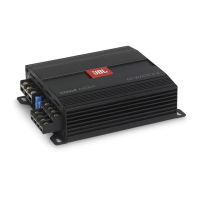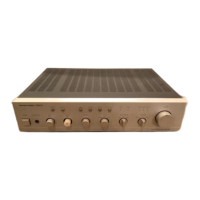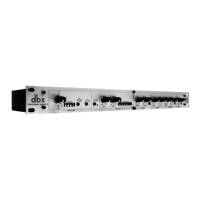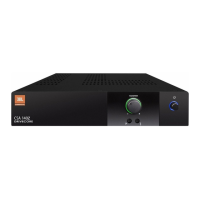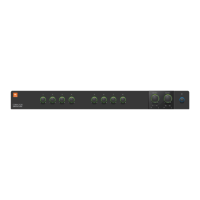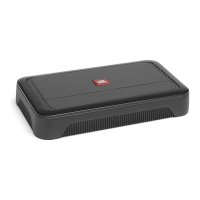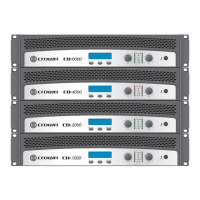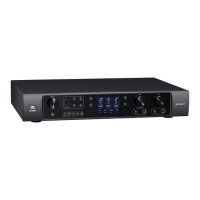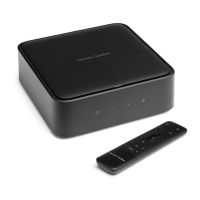Vi1000 USER MANUAL
4.2 4.2: Hardware > DANTE / MADI Switching
4.2: Hardware > DANTE / MADI Sources
The Dante/MADI interface gives the Vi1000 a lot of exibility for recording shows, Virtual Soundchecking or interfacing
with third party MADI or Dante-enabled equipment such as signal routers or system processors.
The interface comprises an input (64ch) in each format and an output (64ch) in each format. The outputs are fed by a
common signal source which is available to any channel or bus via the Dante/MADI buttons within the Local tab of the
console’s output patching matrix. The patched signal is fed to both Dante and MADI outputs simultaneously.
The inputs are selectable using a global switch in the Menu-Settings page of the console to choose either the Dante or
the MADI port as the active input. Whichever of these is selected will appear in the Local tab of the input patch matrix
in the console and will be labelled Dante or MADI as appropriate. Only one input can be used at a time.
Recording
64ch recording/replay is possible via the MADI interface using a third-party MADI interface such as RME MADIface,
in most cases the recording software can be set to take its clock source from the console’s MADI stream. Alternatively
the console’s Wordclock Out can be used to drive the recording software or router, or the console can be slaved to the
other equipment’s clock via Wordclock In.
Alternatively, 64ch recording/replay can be achieved via the Dante port, by simply installing a copy of the Dante Virtual
Soundcard driver (DVS), available from the Audinate website. A free one-off license token is included with every
Vi1000 console -see the documentation packaged with the console. The license token number is used on the Audinate
website to enable the issuing of a license key code which is then entered into the DVS boot screen to unlock the
software. Dante Virtual Soundcard is available in PC and Mac formats and allows the the standard ethernet port on the
computer to become visible as a 64ch input/output low-latency audio interface from any audio recording or
processing software.
Interfacing to another Dante-enabled device or network
The Dante interface allows connection to any other Dante-enabled device, either directly or via a network switch,
and using either normal or redundant connections depending on how the primary and secondary Dante ports of each
device have been congured. Although the patching of signals to/from channels or busses in the console is done via
the console’s patch matrix, the routing of those 64 in and out signals within the Dante network has to be set up using
a free software application called Dante Controller, available from the Audinate website and running on either a PC or
Mac external computer. Using this software it’s possible to make connections on an individual channel basis between
the Vi1000’s 64ch Dante interface and all other Dante equipment on the network.
DANTE / MADI Interface and switching notes
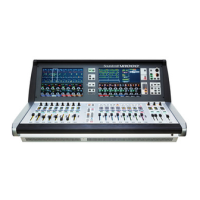
